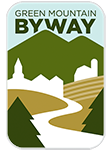By Alex Reiber, Stewardship Coordinator at Stowe Trails Partnership
In late October before the snow began to fall, a group gathered at the Stowe Recreation Path to discuss an often overlooked aspect of outdoor recreation: racial equity. This workshop, entitled “Equity in the Outdoors,” was put on by diversity practitioner, author, and ultrarunner, Mirna Valerio. Mirna partnered with Stowe Trails Partnership and members of the greater Stowe community to provide a framework to help begin the work of antiracism and social justice.
The issue of racial inequality has been around since the inception of our country and continues today. The countless deaths of this past year, including George Floyd and Ahmaud Arbery, are testament to this. And while these may be more overt forms of racism with extreme consequences, racial inequality has percolated into virtually all parts of our lives- including the ways we recreate.
Whether you bike, ski, hike, adaptive ride, or any other outdoor activity, the physical, mental, and spiritual benefits that come from spending time outdoors are incredibly valuable. But the experience can be drastically different depending on things such as the color of your skin or body type.

The program was built on the premise of “if you know better, you do better.” Many social and racial injustices are ingrained in our everyday lives and behaviors. Some we may be aware of, others we may not. As we rode along the recreation path, we stopped at various points along the way for activities and discussions. However, this was not a time for debate or arguing. This was a time to truly listen to one another.
The afternoon began with exercises on identity. We all have an identity through which we understand and relate to the world. This identity comprises being a part of numerous social groups, including our race, ethnicity, body type, socioeconomic status, gender, sexuality, religious views, political views, educational background- the list goes on. Many of these things we are born into and do not have a say in.

Being a part of different social groups, whether we are aware of it or not, can serve as an advantage or disadvantage based on the values of our society. As a group, we reflected on what makes up our identities and how we benefit or are disadvantaged by those factors. We also looked at the social groups that have historically been advantaged in the outdoor recreation community: those that are white, able-bodied, slim, and in the middle or upper class.
At our next stop, we discussed the different ways that racism is manifested at a structural level, including disparities in housing, policing, the prison system, and in the workforce. We also reflected on racial inequality at an individual level during one on one interactions. This includes gaslighting (i.e., disregarding or invalidating) the experiences of BIPOC (black, indigenous, and people of color) and microaggressions, which are subtle, indirect, or unintentional acts of discrimination.
Imagine being an experienced runner and getting ready to run at a local trail network. You’re decked out in all of the latest gear and have got your hydration pack and trail runners ready to go. Just as you are about to start up the trail, a man approaches you to ask if you are sure you’re in the right place and if you are prepared. As you look around, you see several other people at the trailhead wearing street clothes that are not being questioned. This is an example of a microaggression that Mirna has repeatedly experienced. The cumulative effect of being subjected to comments like these can be exhausting and lead to a sense of not being welcomed, not belonging, or being less than. These “unconscious signals of encoded superiority” serve to perpetuate the notion of racial inequality and that trails and mountains are only there to benefit people who look a certain way.

Throughout the workshop, Mirna continued to drive home a key point: that intent does not matter. Your impact is what is important. If you say or do something offensive or act in ways that further social and racial inequality, it does not matter if that was not your intent. The result is still the same. Being able and willing to objectively look at your own behavior is what Mirna called “critical humility.” Discomfort is okay, and it is a prime opportunity for learning and growth.
As we approached the end of the Recreation Path, we reflected on steps someone can take to work towards being actively antiracist. These include voting on both macro and local levels, educating yourself on racial inequalities, using your knowledge and privilege to speak up against racist acts, and joining or creating JEDI (justice, equity, diversity, and inclusion) task forces in your community organizations. These are some examples, but by no means an exhaustive list.
In a socially just society, all social identity groups can participate fully, and that includes outdoor recreation. Although we have a long road ahead of us, this workshop exemplifies that Stowe is doing the work to make our community a more inclusive place. As members of this community, whether we know it or not, we all play a role in dismantling or perpetuating racial inequality. When you know better, you do better.
